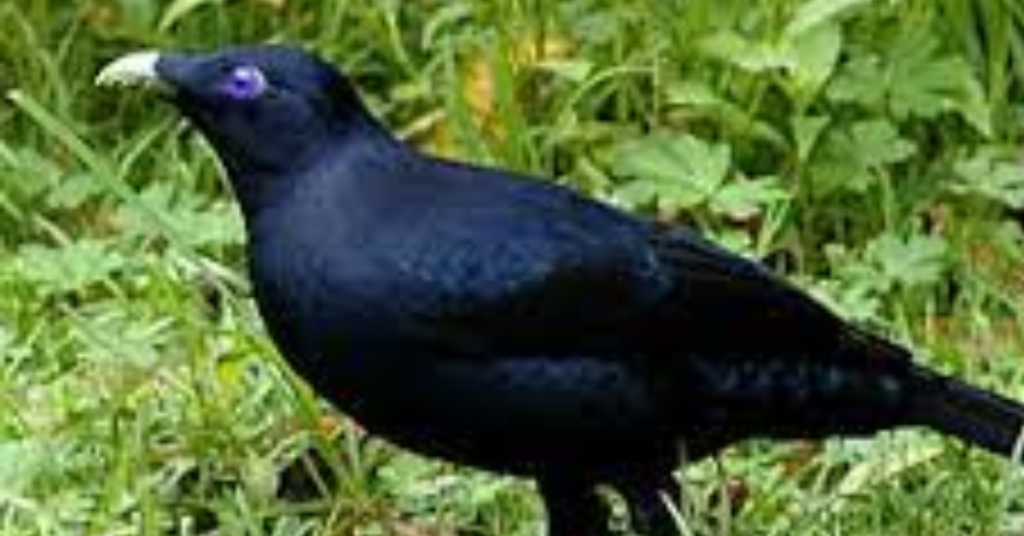Male Bowerbird
Unlike most birds that build new nests each breeding season, male satin bowerbirds take a unique and ongoing approach to constructing and decorating their bowers. The process is intricate and can take years to perfect, with ongoing adjustments and fierce competition among males. Here’s a closer look at this unusual behavior.

1. Long-Term Bower Construction and Maintenance
- Bowers Are Not Nests: While nests are built by most birds for raising young, bowers are strictly for courtship displays. The satin bowerbird’s bower is a display structure, not a home, constructed on the ground with sticks and twigs that form an archway or avenue.
- Years of Development: A male satin bowerbird doesn’t abandon his bower after a single breeding season. Instead, he spends multiple seasons refining it, often returning to the same spot year after year. Over time, the bower becomes increasingly elaborate and visually impressive.
2. Decoration Collection and Arrangement
- Preference for Blue Decorations: Males collect various objects, especially those in shades of blue, as blue is thought to be particularly attractive to female satin bowerbirds. These items can include berries, feathers, flowers, plastic items, bottle caps, and any other blue object the bird can find.
- Constant Redecorating: Males don’t simply gather decorations once; they are constantly adjusting and rearranging the items in their bower to ensure it remains visually appealing. This ongoing decorating is meant to impress visiting females and keep the display fresh and attractive.
3. Competition for Decorative Items
- Stealing from Rivals: Competition among males is intense, with many males often in close proximity. They frequently steal decorations, especially blue ones, from neighboring bowers to enhance their own. This results in a back-and-forth of theft and replacement, which can create an almost “competitive decorating” atmosphere.
- Guarding the Bower: Males may spend significant time guarding their bowers to prevent rivals from taking decorations. This can also help deter females from being drawn to other nearby bowers.
4. Selective Collection of Rare Items
- Rarity and Value: Males often prioritize items that are rare or difficult to find. A rare blue item can increase a bower’s attractiveness, adding an element of uniqueness that may appeal to females. This makes the competition for blue objects, particularly rare ones, even fiercer.
- Use of Natural and Man-Made Objects: Satin bowerbirds aren’t picky about sources, using both natural items like flowers and berries and man-made objects like plastic caps or pieces of glass. If the item is blue and eye-catching, it has a place in the bower.
5. Effectiveness of the Bower in Attracting Mates
- Impression on Females: The quality of a male’s bower directly impacts his success in attracting mates. Females assess the size, symmetry, and decoration of the bower and the male’s ability to arrange and maintain it, as well as the colors and variety of decorations.
- Enhanced by Performances: To further enhance the appeal of the bower, the male performs dances and vocalizations when a female approaches, showcasing his creativity, skill, and physical fitness. This display, combined with an attractive bower, is a key factor in female choice.
6. Learning and Improvement Over Time
- Experience Matters: Young male satin bowerbirds don’t initially construct highly elaborate bowers. They often start by building rudimentary structures and observing older, more experienced males. Over several years, they improve their techniques, learning what appeals most to females.
- Incremental Improvement: Each season, the male adds to and refines his bower. This gradual improvement allows him to learn through trial and error and observation, making his display more effective with each passing year.
7. Impact of Human Activity
- Urban Influence: In areas where humans are present, satin bowerbirds sometimes incorporate unusual man-made items into their bowers, like bottle caps, pens, or even pieces of cloth, provided they’re blue. This behavior demonstrates their adaptability but can also lead to dependency on human materials if natural items are scarce.
- Environmental Indicators: The presence of satin bowerbirds and their bowers in an area is often an indicator of healthy forest ecosystems. When forests are disturbed or destroyed, satin bowerbirds lose both their natural materials and the forested habitats they rely on for nesting and courtship.
This ongoing commitment to bower construction and decoration shows that male satin bowerbirds invest heavily in courtship, with each bower becoming a long-term project that evolves over the bird’s lifetime. These displays highlight their creativity, intelligence, and determination in winning over potential mates.

